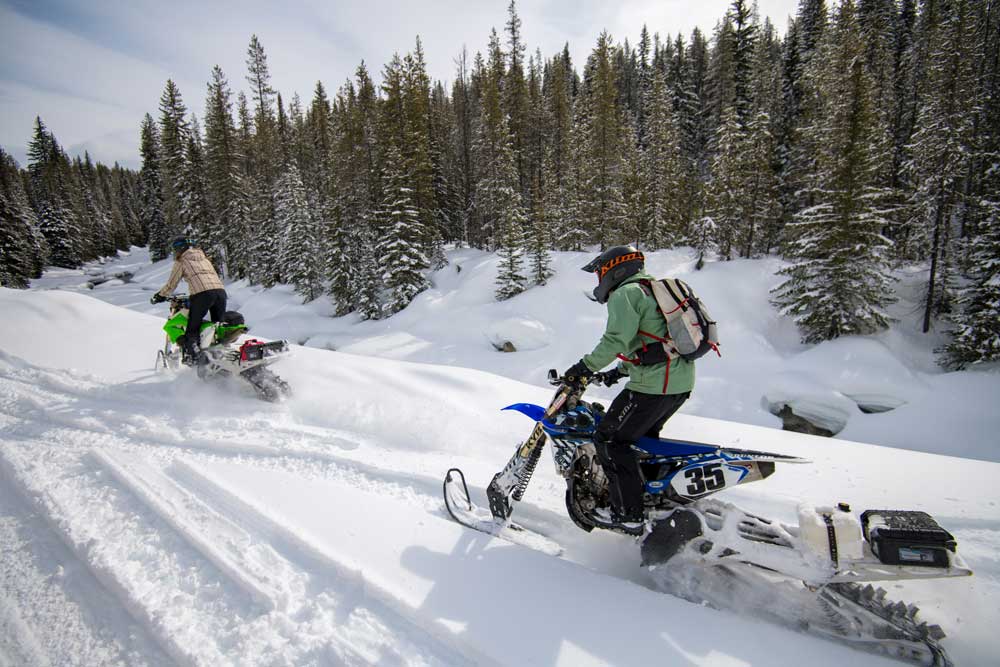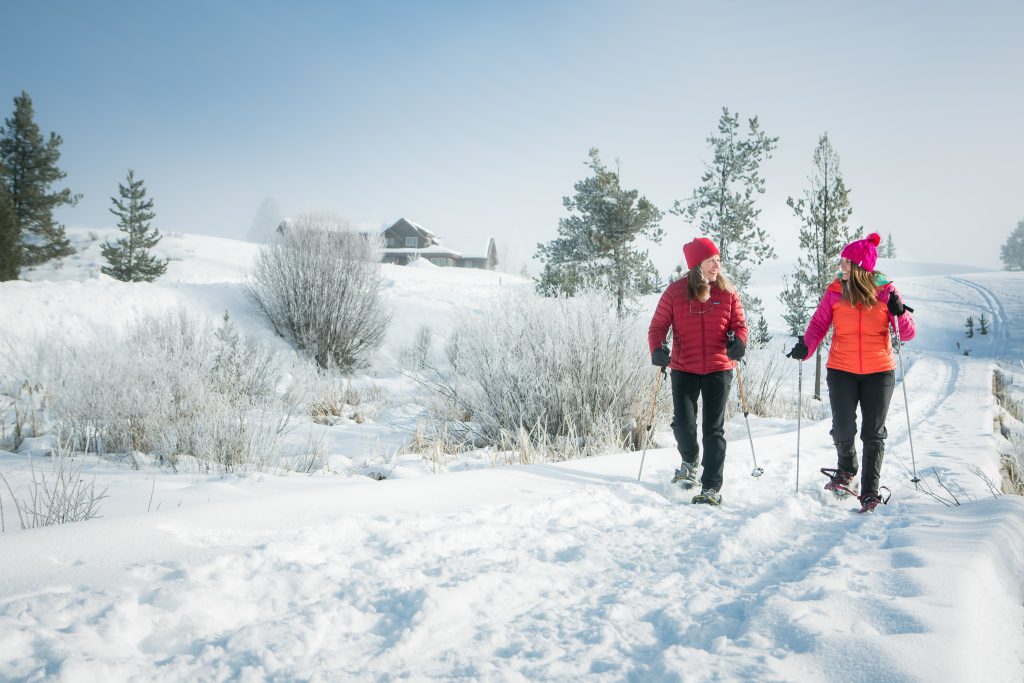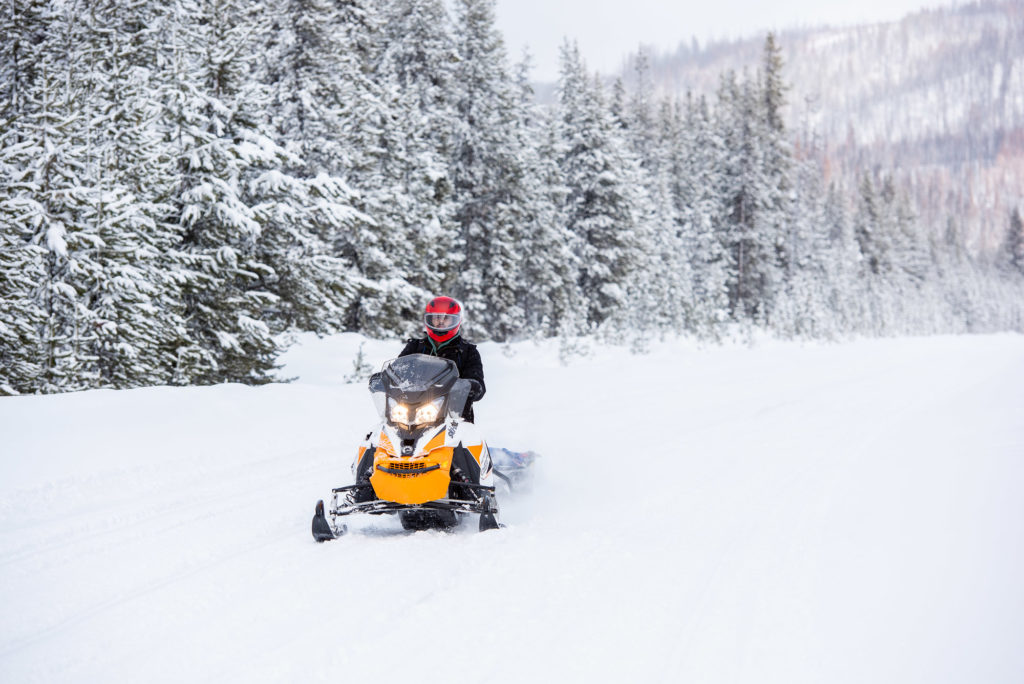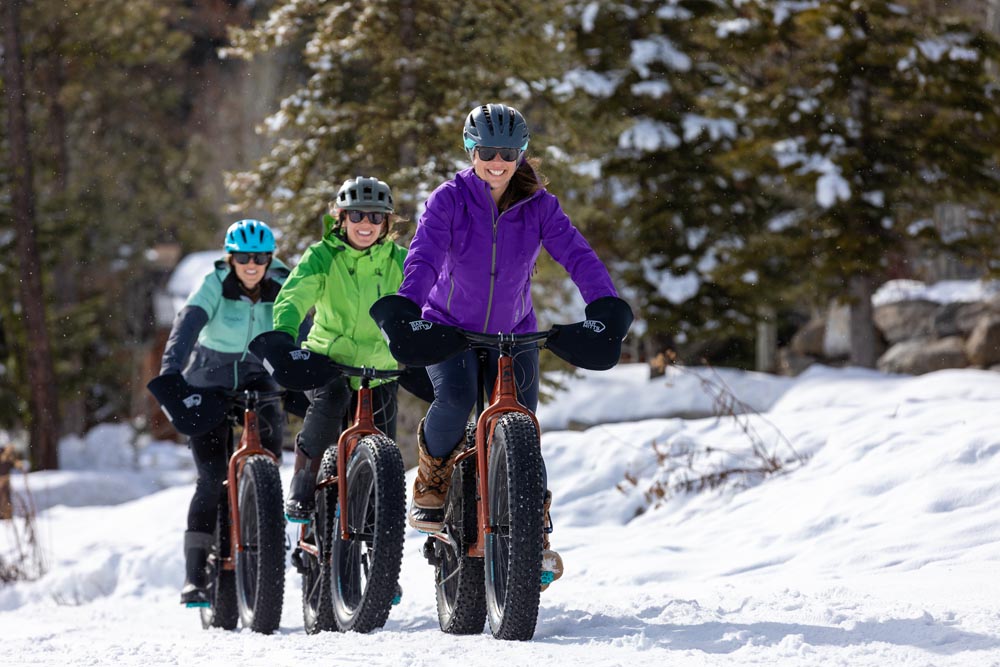It isn’t often we get to witness the birth of a new sport. In recent history, only a handful come to mind, the most notable being snowboarding. Today, there is another new sport taking winter recreation by storm. Snow biking. A few years ago, you would have been forgiven for having never heard of it. Now, snow biking is more popular than ever and giving its big brother, the snowmobile, some fierce competition. “It doesn’t replace the snowmobile,” says Brett Blaser, Senior Technical Expert at Timbersled, “it has actually created a whole new segment in snowsports.”
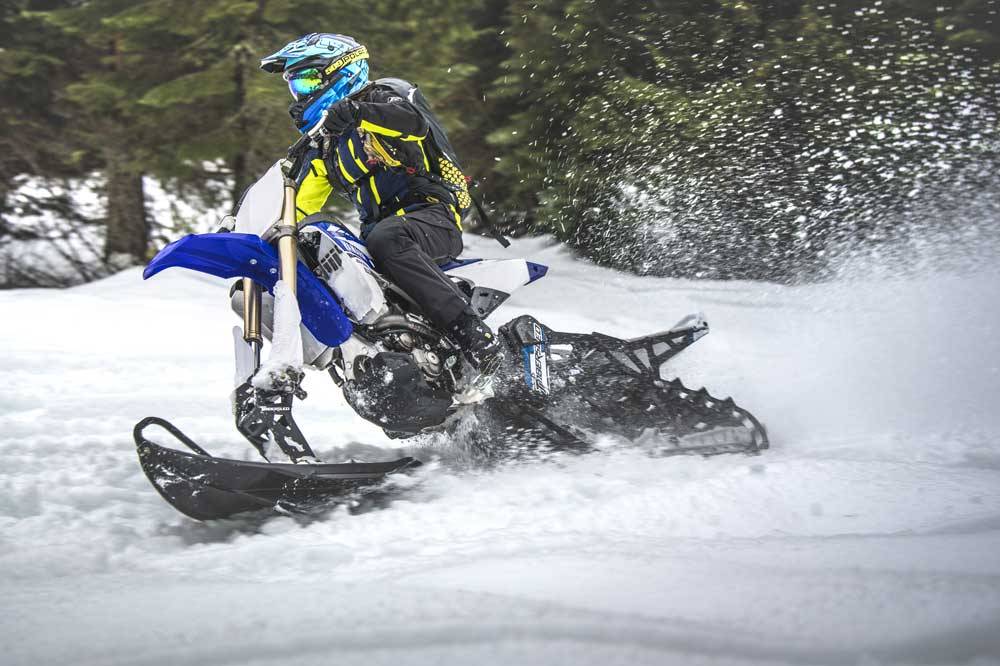
What is a snow bike?
Snow biking is a hybrid of snowmobiling and dirt bike riding. The idea for the snow bike can be traced back to the 1920s when prototypes for tracks that could be placed on motorbikes were first built. In the 1930s, the idea of putting a ski on the front was first envisioned. Several more attempts at snow bikes were made over the years, but it wasn’t until the early 2000s that snow biking would finally have a winning design.
Allen Mangum and his wife Natasha first established Timbersled in 2002 after Allen developed a new rear snowmobile suspension that enabled riders to control the ski lift on high horsepower machines. This innovation spurred the development of the first Timbersled snow bike concept and the initial prototype was built in 2009.
The Timbersled system takes a motocross or off-road motorcycle from dirt to snow by replacing the wheels on a motorcycle with a ski in the front and a track system in the back. Timbersled systems fit a wide range of modern motocross and off-road dirt bikes from lightweight 250s that mimic a 600 sled to more powerful 450s akin to 800 sleds with explosive power. No matter what bike you convert, this system means you can essentially ride your motorcycle year-round.
The initial adoption of the Timbersled system was swift, appealing to both snowmobilers and dirt bike riders alike. This success also caught the eye of Polaris, a leader in the powersports industry, and Timbersled joined the Polaris family in 2015. This partnership has helped spur new innovation and accelerate the growth of the snow bike industry. Blaser says this partnership has been a game-changer. “Our ability to innovate with all of the Polaris resources behind us has been amazing,” he says. “We had ideas before, but not the resources.”
But it isn’t only that snow biking is providing new options for winter recreationalists …it is also an Idaho success story. From the onset, all manufacturing and operations have been headquartered in Sandpoint, Idaho. Closer to home, the McCall area has provided a playground for snow biking. Much of the initial concept testing was conducted right in our own backyard above Cascade Lake near Donnelly, Idaho.
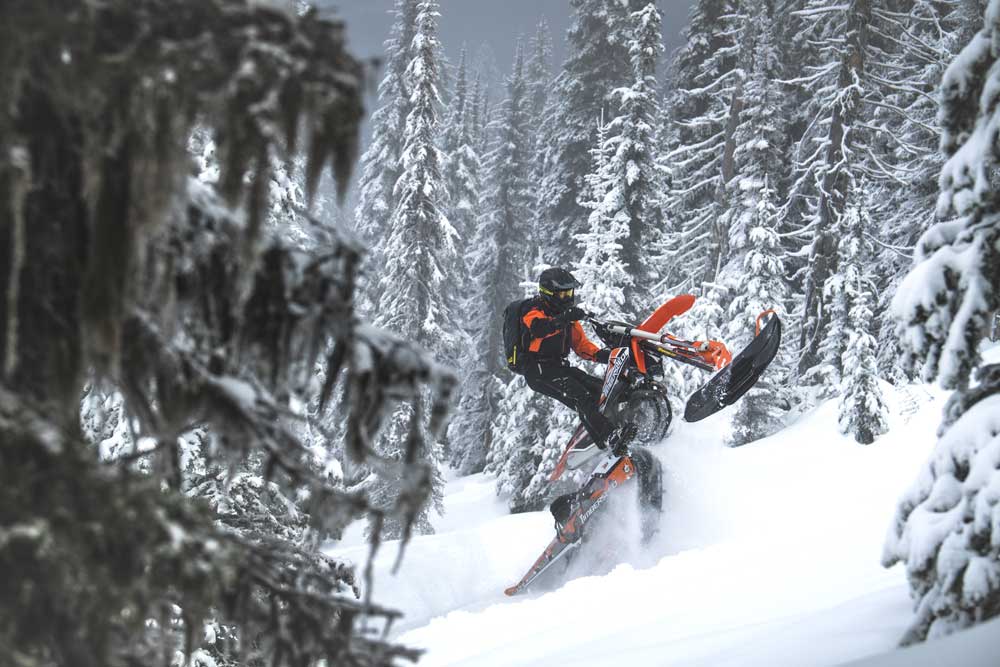
What makes snow biking attractive?
Idaho continues to be the epicenter for snow biking, even attracting big names like pro freestyle motocross rider Ronnie Renner to try out the sport near Burgdorf. But what is it that makes snow biking so appealing?
In a word, freedom. “On a snow bike, you just point in the direction you want to go, throttle up and lean where you need to,” says Sarah Whipple, a McCall area local. “A snow bike is much easier to ride in variable terrain,” says Whipple. “I feel more freedom on a snow bike, both on-trail and off-trail, because it’s so easy to go where I want without hesitation.”
Whipple is a both a Polaris snowmobile ambassador as well as a Timbersled ambassador and has found that each sport offers a unique experience. It isn’t that one is better than the other, but they offer different line choices and enable you to access different types of terrain. “Snow bikers have the most fun where there are a lot of trees and a lot of variation in the landscape,” says Whipple. On a snow bike, you can traverse very steep slopes with ease in very packed, hard snow, yet you can also gracefully float through the powder, carving back and forth like a snowboarder does.
Whipple says that her favorite areas to snow bike around McCall are in the 5,500 to 7,000 feet elevation range where there are the most trees. “These are also the areas that are quickest to get to so you can start playing much sooner,” she says. “Plus, a snow bike doesn’t need as deep of snow to play in, just a good solid base.”
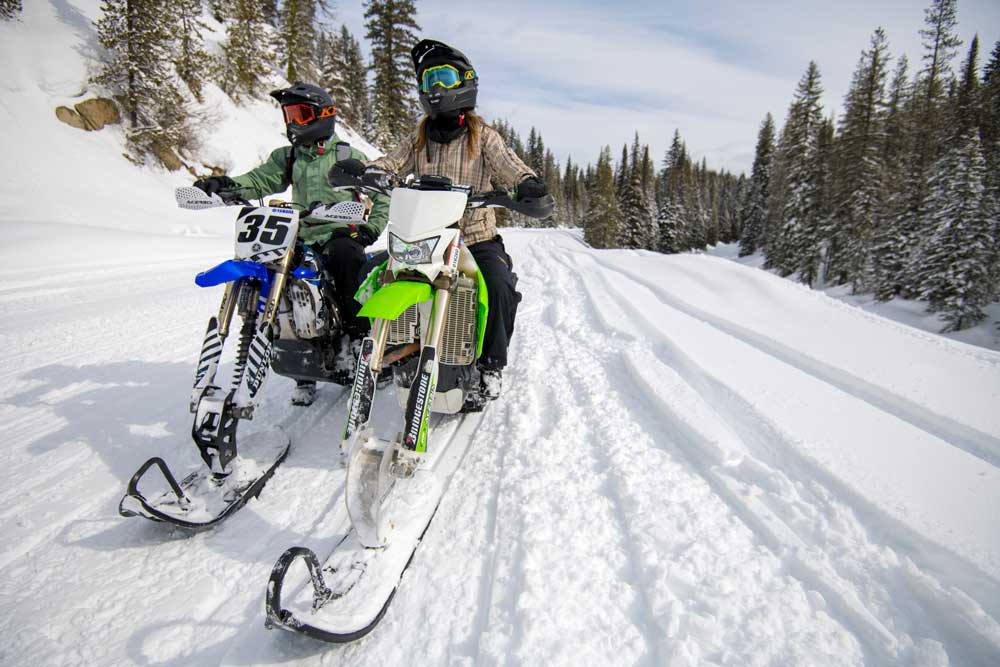
How to get started
For those looking to get into the snow bike game, we recommend you start with a reputable dealer. Mile High Power Sports in McCall has knowledgeable snow bikers on staff and carry the full line of Timbersled kits. They also offer select demo days where you can try before you buy (please check with Mile High Power Sports for demo schedules).
Timbersled currently offers several models depending on the type of bike you own and riding you want to do. Brand new this year is the ARO model. This fully redesigned system includes a completely new chassis for improved handling and quicker install. Choose from options including the short track (ST), the race track (SX), or the long track (LT). Timbersled also offers the “93 ST Ripper” to fit 110 CC dirt bikes for youth riders so the entire family can get out and ride together. “It doesn’t matter what kit you decide to purchase, the fun factor is the same on all of them,” says Blaser.
To convert your snow bike, no major modifications are needed. “The systems are 100 percent bolt on,” says Blaser. “It is really just a few bolts, a brake line and a chain in the back.” If you are going the DIY route, plan on about three hours the first time you convert your bike. You can also opt to have a dealer like Mile High Power Sports do the conversion.
Once you have your bike ready to go, Blaser recommends you take an hour in a meadow to get a feel for riding. Whipple agrees. “Start out in a flat powder field and work your way to variable terrain while getting used to how the machine handles and reacts,” she says. The best recommendation from Whipple is to find an experienced snow biker to show you the ropes. “Other riders can give you insight on the machines and equipment, show you where to ride, and help you understand what these bikes are truly capable of.”
Once you have the hang of it, there is really no limit to where a snow bike can take you. “My favorite thing is to pick a lake on the map and head out through the trees,” says Blaser. “On a snow bike, you are free to explore.”
Before You Ride:
- Be sure to check area 43A on your trail permit. This supports our local grooming efforts!
- Know where you can ride and share the trail. Be respectful of private property and ski areas.
- Before you head out on your bike, be sure that you are well equipped and knowledgeable about how to use safety equipment. Here is our quick list of safety tips:
- Layer up and dress for the weather.
- Always wear a helmet.
- Include a first aid kit, water and snacks in your pack.
- Having safety equipment like a shovel, probe, beacon and avalanche backpack are highly recommended, but it isn’t enough to have them – know how to use them!
- For courses on avalanche training, visit the Payette Avalanche Center at payetteavalanche.org.
- Never ride alone.
Learn more about snow biking with these great local resources:

